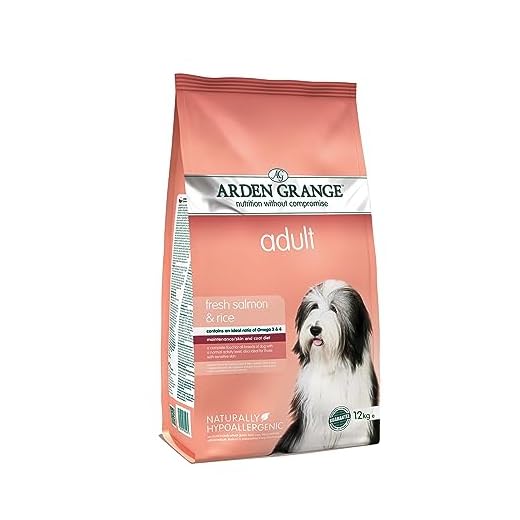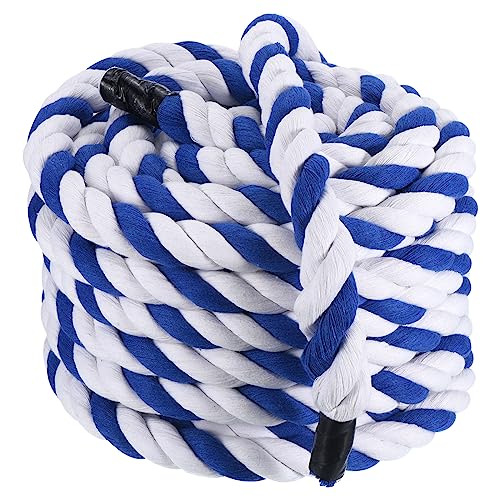




Offering your furry friend a bite of high-quality fish can be beneficial, but there are specific guidelines to follow. Raw varieties of this fish may contain parasites and bacteria harmful to pets. Always ensure the seafood is cooked thoroughly to eliminate potential risks. This preparation is crucial for maintaining your pet’s health.
Rich in omega-3 fatty acids, this aquatic protein source supports skin and coat health, boosting the immune system. However, moderation is key; excessive consumption may lead to gastrointestinal issues. When introducing this protein into your pet’s diet, start with small portions to monitor for any adverse reactions.
Ensure that all bones are removed before serving any fish to avoid choking hazards. Consider consulting a veterinarian for personalised advice tailored to your pet’s dietary needs. By following these recommendations, you can safely treat your companion to a nutritious and tasty meal.
Feeding Raw Fish to Your Pet
Yes, raw fish can pose risks to your furry friend. It may contain harmful parasites and bacteria, which can lead to serious health issues. Cooking fish eliminates these dangers, making it a safer option. Always ensure any fish given is thoroughly cooked to avoid health complications.
Health Benefits of Cooked Fish
Incorporating cooked fish into your pet’s diet can provide valuable nutrients. It is a good source of protein, omega-3 fatty acids, and essential vitamins. These elements contribute to a shiny coat, healthy skin, and overall well-being. However, moderation is key; too much fish can lead to imbalances in nutrition.
Preparing Fish for Your Furry Companion
When preparing fish, remove all bones and avoid using seasonings or sauces, as these can be harmful. Steaming or baking fish without added ingredients ensures it remains safe and nutritious. Always consult a vet before introducing new foods to your pet’s diet to tailor a balanced meal plan.
Understanding the Nutritional Benefits of Salmon for Dogs
Including this type of fish in your pet’s diet can provide numerous health advantages. Rich in omega-3 fatty acids, it promotes healthy skin and a shiny coat. This nutrient helps reduce inflammation and can alleviate conditions like allergies and arthritis.
Protein-Rich Source
This fish is an excellent source of high-quality protein, essential for muscle development and overall health. Healthy protein intake supports energy levels and aids in recovery after physical activities. A balanced diet featuring this fish can help maintain your companion’s lean body mass.
Vitamins and Minerals
Packed with B vitamins, this seafood contributes to metabolic function and energy production. It also contains important minerals like selenium and phosphorus, which play vital roles in maintaining strong bones and a well-functioning immune system. Regular inclusion of this fish can enhance your pet’s overall vitality and longevity.
Potential Risks of Feeding Fresh Salmon to Dogs
Feeding raw fish to your furry companion can pose various dangers. Always ensure safety to prevent health issues.
Parasites and Bacteria
Raw fish often contains parasites such as Neorickettsia helminthoeca, which can lead to serious illnesses. Symptoms may include vomiting, diarrhoea, and lethargy. Additionally, harmful bacteria like Salmonella or Listeria could be present, increasing the risk of foodborne illnesses.
Thiamine Deficiency
Feeding excessive amounts of raw fish can contribute to thiamine deficiency. This vitamin is crucial for neurological health. Symptoms of deficiency may include:
- Loss of appetite
- Seizures
- Muscle tremors
It’s advisable to consult a veterinarian before introducing any fish into their diet.
For those considering alternative options for sensitive stomachs, refer to the best dog food for dogs with allergies and sensitive stomachs. This can help ensure a balanced and safe diet for your beloved pet.
How to Prepare Fresh Salmon for Your Dog
Start with high-quality, sushi-grade fish. Ensure it is free from any harmful additives or preservatives. Rinse the meat thoroughly under cold water to remove any residues.
Next, fillet the fish carefully, removing all bones. Use a pair of tweezers to check for any small bones that might have been missed. These can pose a choking hazard or cause internal injury.
After filleting, consider cooking the flesh. Steam or bake it at a low temperature without any seasoning or oils. Cooking eliminates potential parasites and harmful bacteria. Ensure the fish reaches an internal temperature of at least 63°C (145°F) to ensure safety.
Once cooked, allow it to cool completely. Then, cut the meat into small, manageable pieces suitable for your pet’s size. It’s best to introduce this protein gradually, observing for any adverse reactions.
Here’s a simple preparation method:
| Step | Action |
|---|---|
| 1 | Choose high-quality fish |
| 2 | Rinse thoroughly |
| 3 | Fillet and remove bones |
| 4 | Cook by steaming or baking |
| 5 | Cool down and cut into pieces |
Store any leftovers in an airtight container in the refrigerator for up to two days. If you want to keep it longer, freeze the portions. Just remember to thaw it properly before serving.
Signs of Salmon Poisoning in Canines
Recognising symptoms of salmon poisoning is critical for ensuring the safety of your furry friend. If you suspect your pet has ingested infected fish, watch for the following signs:
- Vomiting: Frequent and sudden episodes may occur, often within a few hours after ingestion.
- Diarrhoea: Watery stools, sometimes containing blood, can indicate a severe reaction.
- Lethargy: A noticeable decline in energy levels or unwillingness to engage in usual activities may be evident.
- Fever: Elevated body temperature can be a sign of infection and should be checked promptly.
- Loss of Appetite: A sudden disinterest in food is often observed as the condition progresses.
- Abdominal Pain: Your companion may exhibit signs of discomfort, such as whining or sensitivity to touch around the stomach area.
If any of these symptoms appear following the consumption of infected fish, immediate veterinary attention is essential. Early intervention can greatly improve the prognosis.
Prevention is Key
To avoid potential poisoning, ensure that any fish given is sourced from reliable suppliers and is properly prepared. Always consult with a veterinarian before introducing new items into your pet’s diet.
Alternative Fish Options for Pooches
For those looking to diversify their furry friend’s diet, there are several fish types that can serve as nutritious alternatives. Mackerel is a fantastic choice; it’s rich in omega-3 fatty acids which support skin and coat health. Ensure it’s cooked thoroughly and free from bones before serving.
Tuna is another popular option, though it should be offered in moderation due to its higher mercury content. Canned varieties in water without added salt can be convenient, but always check the labels to avoid any harmful additives.
Herring and Sardines
Herring and sardines are excellent sources of protein and omega-3s, making them ideal for supporting joint health. Both can be given fresh, but canned versions packed in water are also beneficial. Just like mackerel, remove any bones before sharing these with your pet.
Trout as a Healthy Treat
Trout is another superb option. It’s not only low in mercury but also offers a good amount of vitamin D, which aids in calcium absorption. Make sure to cook it well and check for bones to ensure a safe dining experience for your furry companion.
While considering these alternatives, it’s crucial to avoid any fish that may contain high levels of toxins. Always consult with a vet before introducing new items into your pup’s meals. For a change of pace in household tasks, check out are sun joe pressure washers good to keep your space clean and tidy while focusing on your pet’s health.
Consulting Your Veterinarian About Your Dog’s Diet
Always reach out to your vet before introducing new items into your pet’s meal plan. They can provide tailored advice based on your furry friend’s specific health needs and dietary restrictions. Each animal has unique nutritional requirements, which depend on factors like age, breed, weight, and any existing health conditions.
For instance, I once consulted my vet before adding any seafood to my pup’s meals. They recommended starting with small portions to monitor for any adverse reactions. This cautious approach ensures that your four-legged companion remains healthy and happy.
Regular check-ups are also a great opportunity to discuss weight management, as certain ingredients may not be suitable for all pets. Your vet can suggest appropriate portion sizes and frequency of treats. Keeping an open line of communication with your veterinarian empowers you to make informed choices about your pet’s nutrition.
Don’t hesitate to ask questions. If unsure about the safety of specific foods, your vet’s expertise is invaluable. They can guide you through the process of adding variety to your pet’s diet while maintaining their overall health.
FAQ:
Can dogs safely eat fresh salmon?
Yes, dogs can eat fresh salmon, but it is essential to ensure it is properly cooked. Raw salmon can carry parasites and bacteria that may harm your dog. Cooking the fish will eliminate these risks, making it safe for your pet to enjoy.
What are the benefits of feeding dogs fresh salmon?
Fresh salmon is rich in omega-3 fatty acids, which can promote a healthy coat and skin for dogs. It also provides high-quality protein, which supports muscle development and overall health. Additionally, the nutrients found in salmon can contribute to healthy brain function and joint health.
How should I prepare salmon for my dog?
To prepare salmon for your dog, start by cooking it thoroughly without any seasoning, oils, or additives. Baking or grilling the fish is a good option. Ensure that all bones are removed before serving, as they can pose a choking hazard. It’s best to offer salmon in moderation, as part of a balanced diet.
Are there any risks associated with feeding dogs salmon?
Feeding dogs salmon can pose risks if the fish is raw or undercooked, as it may contain parasites like Neorickettsia helminthoeca, which can cause salmon poisoning. Additionally, some dogs may have allergies or sensitivities to fish. It’s advisable to consult with a veterinarian before introducing salmon into your dog’s diet.
How often can I feed my dog salmon?
Salmon can be fed to dogs as an occasional treat rather than a regular part of their diet. Depending on your dog’s size and dietary needs, a small portion once a week is generally safe. Always monitor your dog for any adverse reactions when introducing new foods, including salmon.
Can dogs eat fresh salmon, and is it safe for them?
Yes, dogs can eat fresh salmon, but there are important safety considerations. Fresh salmon may be consumed by dogs if it is properly prepared and cooked to eliminate potential parasites and bacteria. Raw salmon can contain parasites like Neorickettsia helminthoeca, which can lead to salmon poisoning disease in dogs. Cooking the salmon ensures that these harmful organisms are destroyed, making it safe for your pet. Always consult with a veterinarian before introducing new foods into your dog’s diet.









